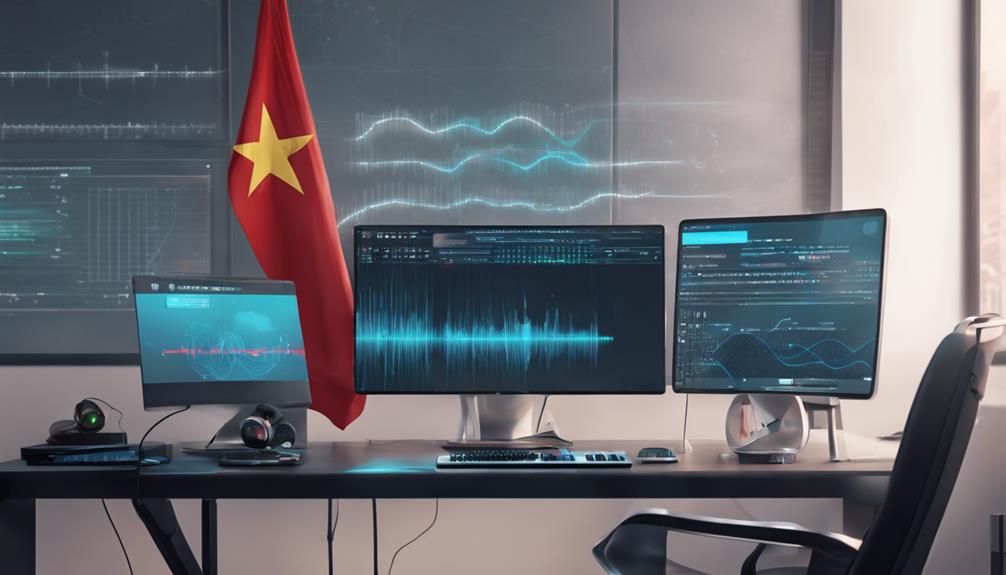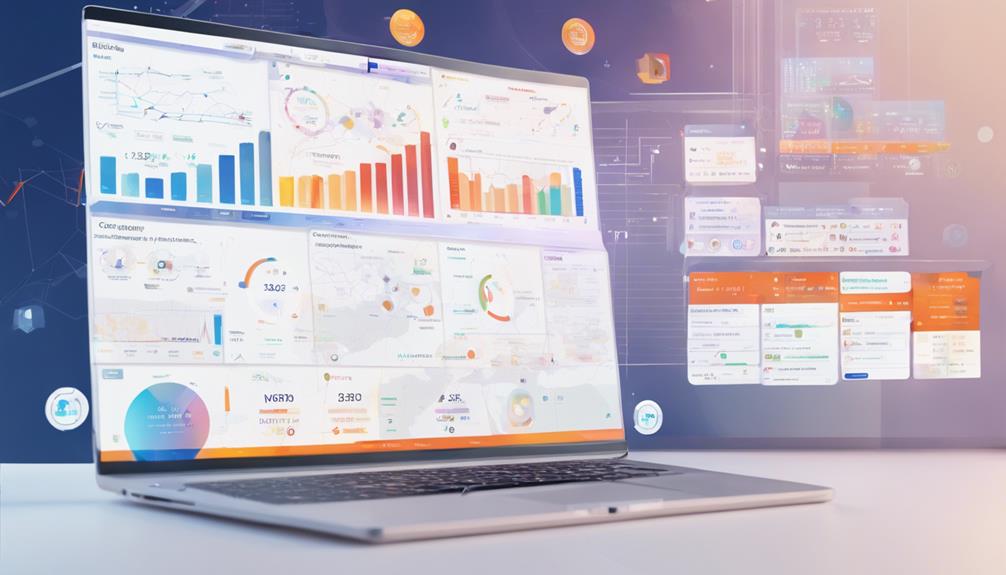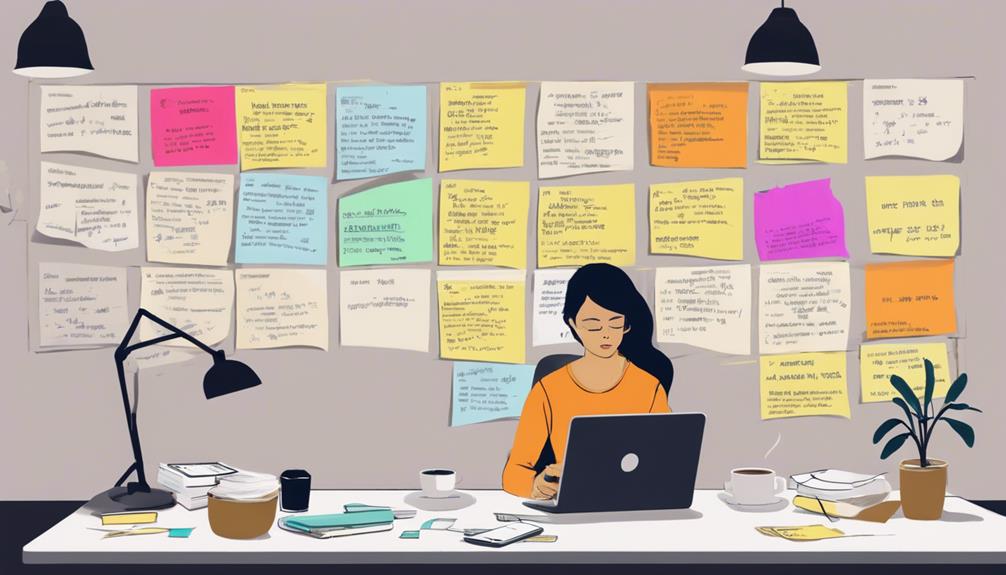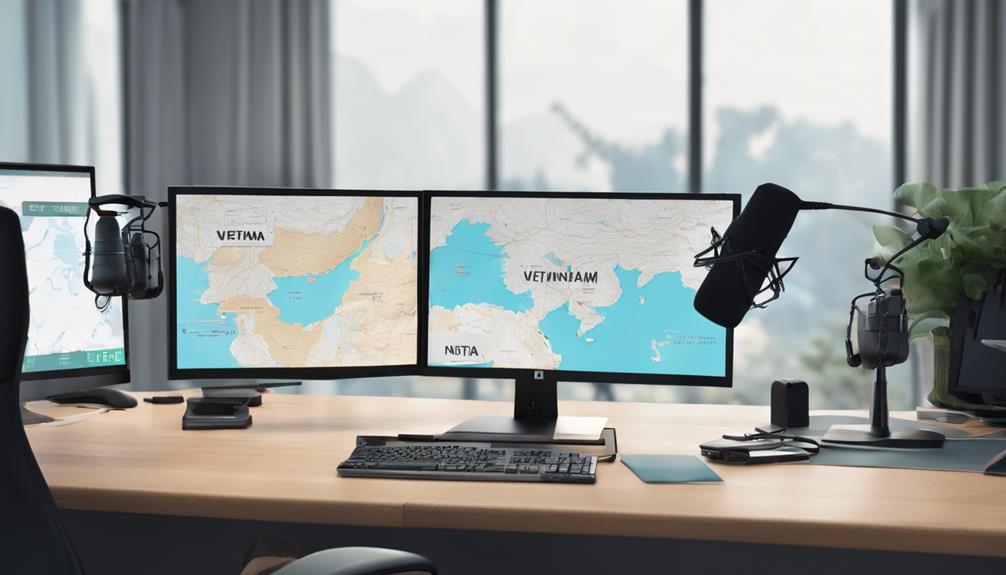Vietnamese speech-to-text transcription services in 2024 use advanced technology to transform spoken words into written text swiftly and accurately. You'll find features like real-time transcription, speaker identification, and robust customization options that cater to various needs. These services improve communication by preserving cultural nuances and streamlining documentation for businesses and educators alike. As AI and machine learning evolve, accuracy and efficiency will only get better. Plus, several top providers like Google Cloud and Microsoft Azure offer free trials, helping you choose the best fit for your requirements. Discover what else these innovative services can do for you!
Key Takeaways
- Vietnamese speech-to-text services convert spoken language into written text, enhancing communication and preserving cultural heritage.
- Modern services offer features like real-time transcription, speaker identification, and customizable formatting for diverse needs.
- Key providers include Google Cloud, IBM Watson, and Microsoft Azure, each with unique strengths in accuracy, speed, and integration.
- Challenges in transcription include dialectal variations, tonal nuances, and background noise, requiring advanced algorithms for improved accuracy.
Overview of Speech to Text Technology

Speech to text technology converts spoken language into written text, making it easier for you to transcribe conversations, meetings, or lectures quickly and accurately. This technology relies on advanced algorithms and machine learning models to recognize and interpret speech. It captures voice inputs through microphones and processes them in real-time, producing text output almost instantaneously.
You don't have to worry about manual typing anymore; it saves you time and reduces errors. The technology supports various languages, including Vietnamese, allowing for broader accessibility. As you speak, the software identifies phonemes, words, and phrases, adapting to accents and dialects for improved accuracy.
Many applications now integrate this technology, from smartphones to professional transcription services. You can find it in virtual assistants, dictation software, and even call transcription tools. As the technology evolves, it continues to enhance its capabilities, providing users with more accurate and context-aware transcriptions.
In your daily life or work, utilizing speech to text can streamline documentation processes and help you focus on what really matters—communicating effectively. Embracing this technology opens up new possibilities for productivity and efficiency.
Importance of Vietnamese Transcription
Vietnamese transcription is crucial for preserving cultural heritage and ensuring effective communication in both personal and professional contexts. When you transcribe Vietnamese speech, you're not just converting spoken words into text; you're capturing the essence of the language, its nuances, and its rich history. This process helps maintain the integrity of Vietnamese culture, allowing future generations to connect with their roots.
In your personal life, accurate transcription allows you to document important conversations, family stories, or local traditions. It ensures that your family's history isn't lost over time. Professionally, Vietnamese transcription can enhance collaboration in multicultural environments. By providing clear and accurate records of meetings, presentations, and interviews, you facilitate better understanding among team members.
Moreover, as businesses expand in Vietnam, the demand for reliable transcription services grows. You need to ensure that your documents are accessible to all stakeholders, regardless of their language proficiency. Investing in quality Vietnamese transcription not only improves communication but also builds trust and fosters relationships. In a rapidly globalizing world, effective transcription is a key tool for bridging gaps and promoting inclusivity.
Key Features of Modern Services

Modern transcription services offer advanced features that enhance accuracy and efficiency, making it easier for you to capture spoken content in Vietnamese. One of the standout features is real-time transcription, which allows you to see text as it's being spoken. This immediate feedback helps you keep track of conversations without missing a beat.
Another key feature is speaker identification, which distinguishes between different voices. This is particularly useful in meetings or interviews, as it helps you attribute the right quotes to the right individuals. Additionally, many services now incorporate machine learning algorithms that continually improve transcription quality over time, meaning the more you use it, the better it gets.
You'll also find customizable formatting options, allowing you to tweak the output to fit your needs, whether it's for formal reports or casual notes. Integration with other software tools is becoming increasingly common, letting you seamlessly incorporate transcriptions into your workflow.
Benefits for Businesses and Educators
Businesses and educators can significantly enhance their productivity and communication by leveraging advanced transcription services for Vietnamese audio content. By converting spoken language into text, you'll save time and resources, allowing your team to focus on core tasks rather than manual note-taking or transcription.
For businesses, these services streamline meetings and discussions. You can easily document important conversations, ensuring everyone's on the same page. This not only boosts accountability but also helps in retaining essential information without the risk of miscommunication.
Educators benefit immensely too. With transcription, you can convert lectures or seminars into accessible written formats. This aids students in reviewing material and enhances comprehension, catering to different learning styles. Additionally, it allows you to create valuable resources like study guides or transcripts for online courses.
Furthermore, having accurate transcriptions can improve collaboration among teams and departments, facilitating better decision-making. By embracing transcription services, you're not just improving efficiency; you're also fostering a culture of clarity and collaboration that can drive success in your organization.
Challenges in Vietnamese Transcription

Transcribing Vietnamese audio can throw up several challenges, from dialectal variations to the complexity of tonal nuances. You might find that different regions use distinct dialects, which can significantly affect pronunciation and word choice. If you're not familiar with these variations, you could struggle to accurately capture the intended meaning.
Tonal differences also add another layer of complexity. Vietnamese is a tonal language, meaning that the tone you use can change the meaning of a word entirely. If you misinterpret a tone, you risk transcribing the wrong word, leading to potential misunderstandings.
Moreover, background noise and overlapping speech can hinder your transcription efforts. In a lively conversation, multiple speakers may talk at once, making it hard to distinguish who's saying what. This situation can be frustrating and may require you to listen multiple times to get it right.
Lastly, idiomatic expressions can pose a challenge. These phrases often don't translate directly, which means you'll need to consider the context to ensure the transcription remains accurate and coherent. Navigating these challenges requires patience, skill, and a deep understanding of the language.
Innovations in Speech Recognition
Advancements in speech recognition technology are helping to address the challenges of transcribing Vietnamese, making it easier to handle dialectal variations and tonal nuances effectively. You'll find that modern algorithms leverage deep learning techniques, allowing systems to learn from vast amounts of data. This means they can better understand the intricacies of Vietnamese, including its six tones and regional dialects.
Additionally, real-time processing capabilities have significantly improved. Now, you can transcribe spoken language almost instantly, which is a game changer for businesses and individuals needing quick and accurate results. Enhanced acoustic models also contribute to better recognition rates, even in noisy environments.
Another exciting innovation is the integration of natural language processing (NLP). This allows the software not only to transcribe speech but also to comprehend context, making it even more efficient. You'll appreciate features like punctuation and grammar auto-correction, which save you time and effort during the transcription process.
With these advancements, you can expect a more reliable and user-friendly experience when using Vietnamese speech-to-text services, ensuring your transcription needs are met with higher accuracy and speed.
Comparison of Top Service Providers

When choosing a speech-to-text service for Vietnamese, you'll want to compare key features like accuracy, processing speed, and user interface. Some of the top providers in the market include Google Cloud Speech-to-Text, IBM Watson Speech to Text, and Microsoft Azure Speech.
Google Cloud offers high accuracy rates and supports various Vietnamese dialects, making it a strong contender. Its user-friendly interface allows for seamless integration into your existing applications. IBM Watson, on the other hand, excels in customization options, letting you tailor the service to specific industries like healthcare or legal. Its processing speed is impressive, though it may have a steeper learning curve.
Microsoft Azure also provides robust features with excellent accuracy. Its real-time transcription capabilities can be particularly useful for live events or meetings. Additionally, Azure's integration with other Microsoft services can simplify your workflow.
Ultimately, the best choice depends on your unique needs. Consider what matters most to you—whether it's accuracy, speed, or ease of use—and test out the free trials some providers offer. This way, you can make an informed decision that best suits your requirements.
Future Trends in Transcription Services
The future of transcription services is set to evolve rapidly as artificial intelligence and machine learning technologies continue to improve accuracy and efficiency. You'll notice a significant shift towards real-time transcription, allowing you to capture conversations and meetings without delays. This means you can access transcripts almost instantly, enhancing productivity and collaboration.
Moreover, as natural language processing advances, you can expect better understanding of context and nuances in speech. This will lead to more accurate transcriptions, even in challenging audio environments. You'll appreciate features like speaker identification and emotion detection, which can add depth to your transcripts.
Integration with other tools will also become commonplace. You'll find that transcription services will seamlessly connect with your favorite productivity apps, making it easier to organize and share your content. Automation will reduce manual input, freeing you up for more important tasks.
Additionally, as multilingual support increases, you'll be able to transcribe content in various languages, including Vietnamese, without needing separate services. Overall, the future holds exciting possibilities that will make transcription services more user-friendly, efficient, and versatile for your needs.
Tips for Choosing the Right Service

As you explore the future of transcription services, knowing how to choose the right service will play a significant role in maximizing the benefits of these advancements. Start by assessing your specific needs. Are you looking for real-time transcription or post-event services? Understanding your requirements will help narrow down your options.
Next, consider the technology behind the service. Look for platforms that utilize advanced speech recognition algorithms and can handle different accents and dialects in Vietnamese. Check user reviews and ratings to gauge reliability and accuracy. It's crucial to choose a service that consistently delivers precise transcripts.
Don't overlook customer support. A responsive support team can make a huge difference if you encounter issues. Also, think about pricing. While you want quality, you shouldn't have to break the bank. Look for services that offer transparent pricing models without hidden fees.
Lastly, take advantage of free trials. This will allow you to test the service and see if it meets your needs. By following these tips, you'll be well-equipped to find a transcription service that enhances your workflow and provides accurate, reliable results.
